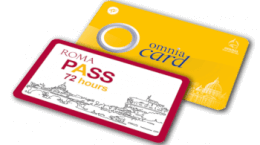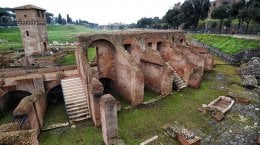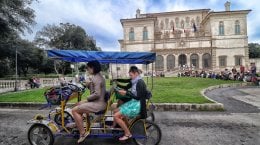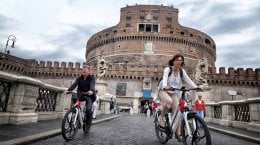Official Reseller Rome and Vatican – Jubilee 2025
Roman Forum and Palatine Hill
Located between the slopes of the Campidoglio, the Esquiline and of the Palatine, the Roman Forum preserves the most significant testimonies of the political and religious history of Ancient Rome.
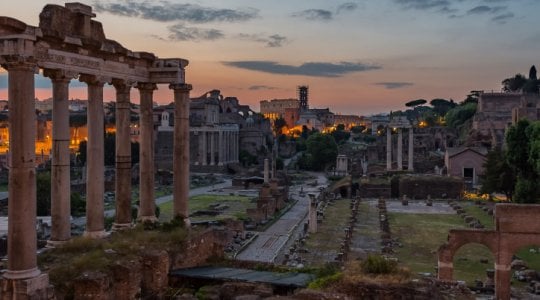
History and architecture of the Roman Forum
Enclosed between the Palatine Hill, the Capitoline Hill, Via dei Fori Imperiali and the Colosseum, the Roman Forum is one of the main archaeological areas of the city of Rome.
Together with the Colosseum and the nearby Arch of Constantine, it is also one of the largest archaeological sites in the world.
Its location, brings the complex back to what in all practical purposes was the nucleus of the political, economic, juridical and religious activities of Ancient Rome, thus embodying the true nerve center of the life and culture of the Roman people, and becoming, during the course of all history, the scene of historical events of fundamental importance for Western culture.
The Roman Forum stands within a valley of marshy origin, used as a necropolis by the first villages that rose on the nearby hills in ancient times.
After being the scene of countless battles of which many of the legends related to the foundation of the city of Rome speak about, the valley was reclaimed in B.C. 600 by King Tarquinio Prisco.
The work was possible through the construction of the Cloaca Maxima, the very first sewer pipe, which involved an almost total drainage of the ground, leaving only a small pond, the lacus curtius, which today is shown by means of a plaque as the original disappeared.
Following the reclamation intervention, the main square which rises in the central area of the forum was outlined, proceeding with the paving of the land and with the creation of different access points, in order to open the entrance to the square from more directions, while maintaining the Via Sacra as the main one.
Rectangular in shape, the area was designed to be a meeting place and a place of commerce, becoming the seat of the city market and a reference point for all political and judicial activities.
During the second half of the 6th century, the Forum saw the construction of the Comitium, a complex characterized by a lapis niger pavement, with a characteristic dark color, which would soon become the center of the main political activities. The building was destined to host a glorious sanctuary dedicated to the God Vulcan, located to the west towards the Campidoglio, and was founded, according to legend, by Tito Tazio, who was King of Rome for five years together with Romulus.
In the same period, the Curia was also erected. It was called Hostilia and it was destined for the meeting of the Roman senate and a series of religious buildings: the Regia, dedicated to the sacral functions, the Vestae atrium complex, that had the famous Temple of Vesta inside it which had a circular base and the House of the Vestal Virgins, the center of the priestly colleges.
In the Republican age then arose: the splendid temple of Saturn, home to the treasure of Rome, the temple of the Dioscuri, dedicated to Castor and Pollux and the famous Temple of Concord, built by Furio Camillo near the Capitol, a century later than the previous ones.
The 2nd century was characterized by an imposing architectural ferment, which in fact led to the construction of new structures: four basilicas erected all around the square, destined for economic and judicial activities, and the Tabularium, a monument characterized by a beautiful arched façade, erected on the Campidoglio, in the direction of the Forum.
The Roman Forum complex, thus, began to take on an increasingly regular shape, enriching itself with further constructions even during the imperial era, first with Cesare, then under the Emperor Augusto, and finally with Adriano, gradually reaching its final conformation.
Many other small temples were created during this intense time, and several restorations and renovations of some old architectures were also carried out, including, for example, the Temple of Concord, reconstructed from scratch by Tiberius in B.C. 10. In the Middle Ages, unfortunately, most of the monuments of the Roman Forum collapsed, effectively defining the end of the architectural complex.
The sunken ground was like having its ruins being swallowed up by itself, leaving an uncultivated clearing that was used as a pasture field and was therefore renamed as “” Campo Vaccino “”.
Since then, the Roman Forum has never again seen the splendor of its time, but despite the weather having worn out its presence during all these years, it still remains today a place of inestimable value and beauty.
The Palatine Hill
According to the legend, the ancient city of Rome was born on the Palatine Hill. The city was founded by Romulus in the 8th century B.C, starting from a first village built on the hill as early as B.C. 1000.
Since that moment, an intensive urbanization went on to form the so-called “Roma Quadrata”, extending from a small area of the Palatine to the whole area of the hill.
For these reasons, the Palatine Hill has always held, for the entire course of history, a position of particular importance for the development and growth of the city, in addition to embodying the setting of the scene of the famous legend of Romulus, of his brother Remus and the Lupa, linked to the foundation of the city.
Between the 2nd and 1st century B.C., the hill then became the residential neighborhood that was populated by the aristocrats, seeing the construction of the beautiful Casa dei Grifi and the beginning of a particularly prosperous era.
In the imperial age, the history of the Palatine was in fact further enriched, when the greatest Roman emperors chose it as the site for the construction of their majestic palaces, consecrating the legacy of the hill with all their splendor.
Timetables and useful directions to visit the Roman Forum and the Palatine Hill
The ticket to jointly visit the Colosseum, Roman Forum and Palatine Hill and all the current exhibitions is valid for 2 consecutive days starting from the first use, both for 1 entry to the Colosseum, and for 1 entry to the Roman Forum / Palatine Hill.
Within the Roman Forum, it will also be possible to visit the interior spaces of the Curia every weekday morning.
The rate is € 12.00 for the full ticket and € 7.50 for the reduced ticket, while the purchase of the online ticket includes a supplement to the pre-sale fee of € 2.00.
To plan a tour, the address of the archaeological site of the Roman Forum is: Largo della Salara Vecchia, 5/6, 00186 Rome.
The address of the Palatine is: Via di St. Gregorio, 30, 00184 Rome.
For more information, visit the official website: www.coopculture.it
The Forums are open every day of the year, excluding Christmas and New Year’s Day, opening 08.30 a.m., closing an hour before sunset, as follows:
From the last Sunday of March to the end of August, 7.30 p.m.
September, 7.00 p.m.
October, 6.30 p.m.
from November to February, 4.30 p.m.
from 16 February to 15 March, 5.00 p.m.
from 16 March to the last Saturday of March, at 5.30 p.m.
Check the stops of the Open Top Bus Vatican & Rome on the map in order to find the closest stop to the attraction you are interested in visiting;
Alternatively, consult https://www.google.com/maps for information on public transport.
Remember: with Omnia 72h you have access to all means of public transport of Rome.
Colosseo, Carcer Tullianum
